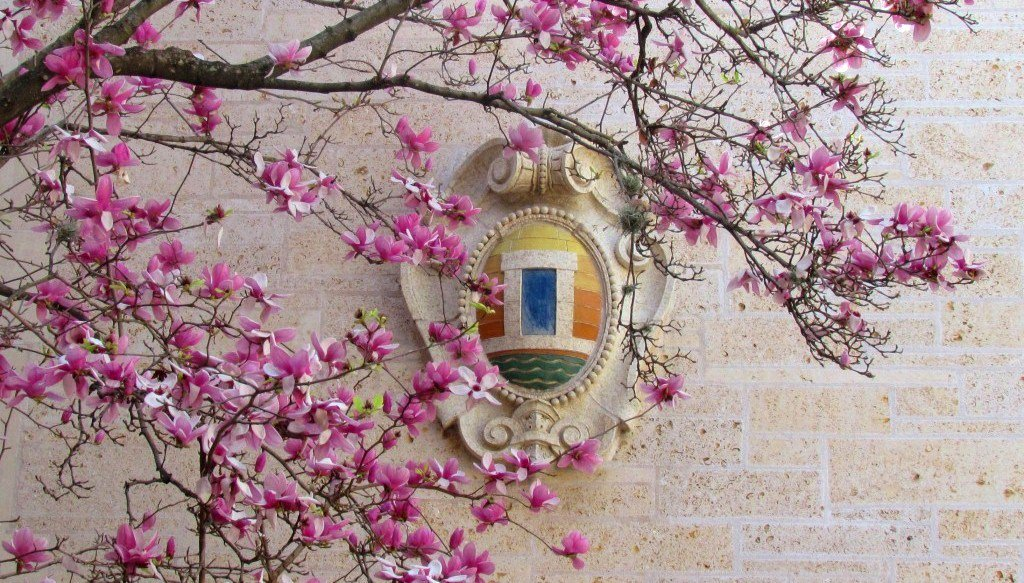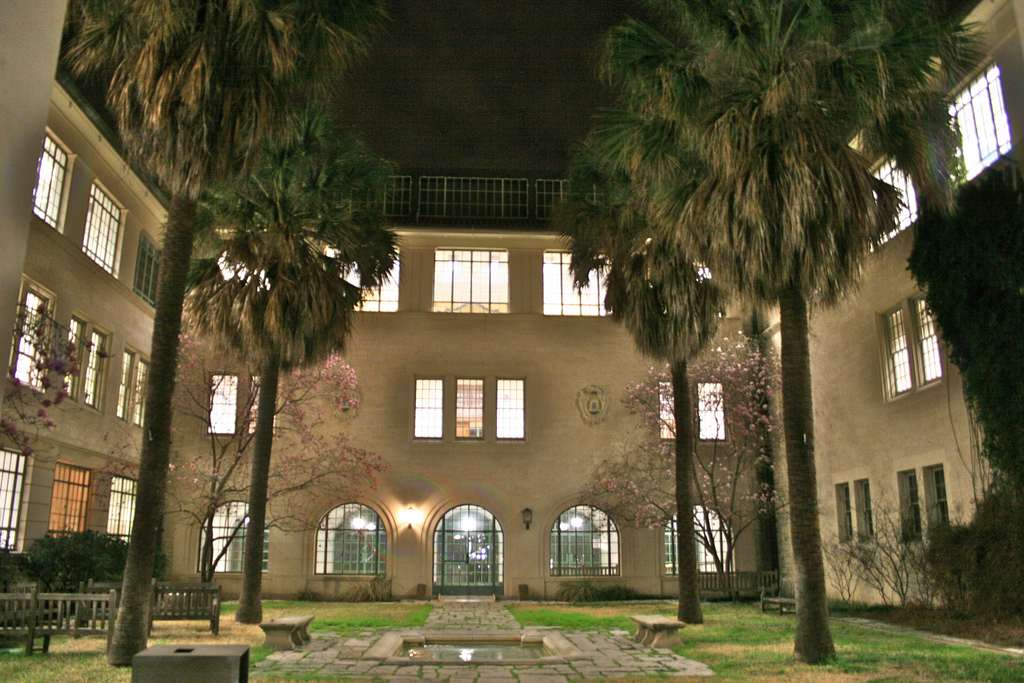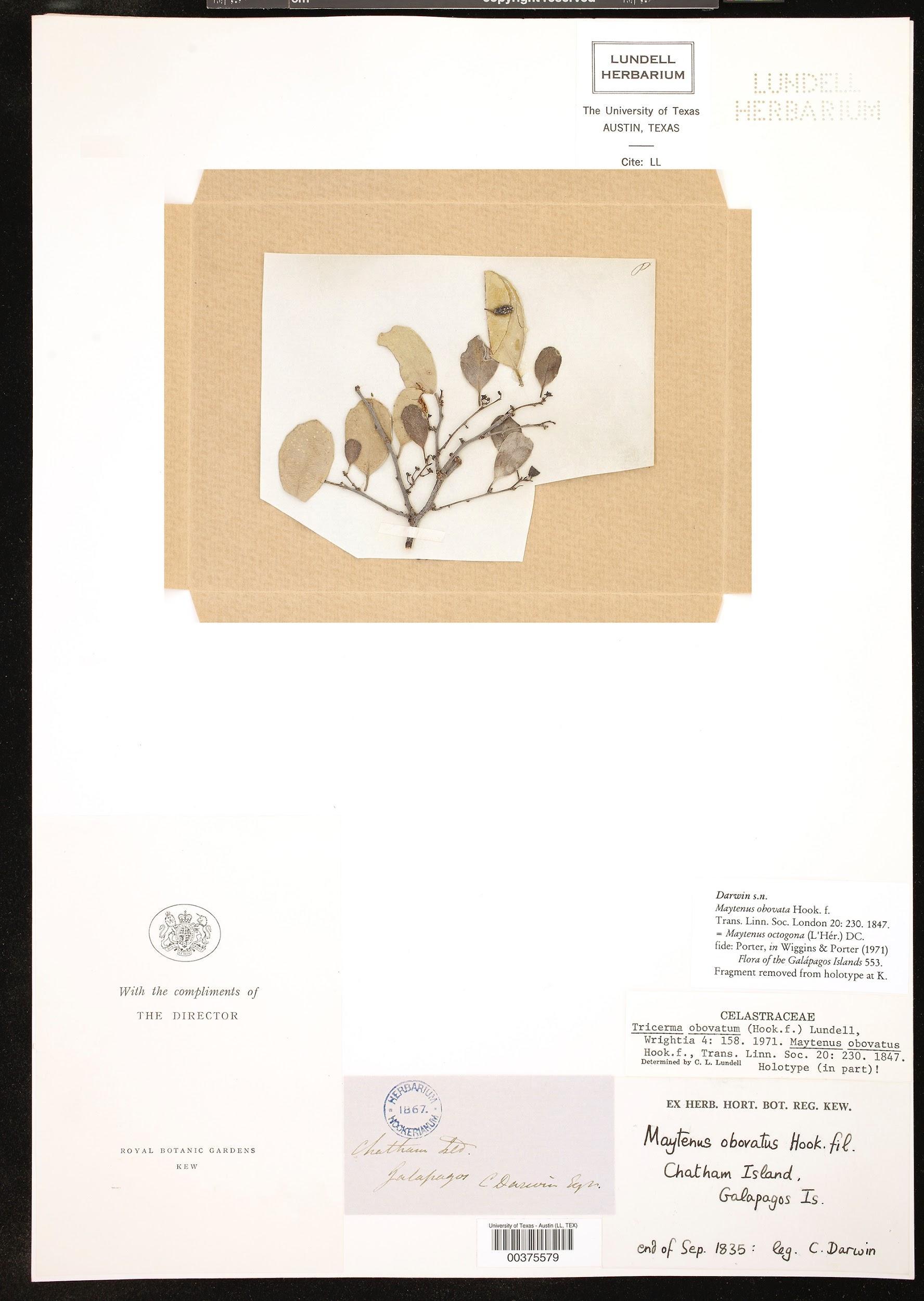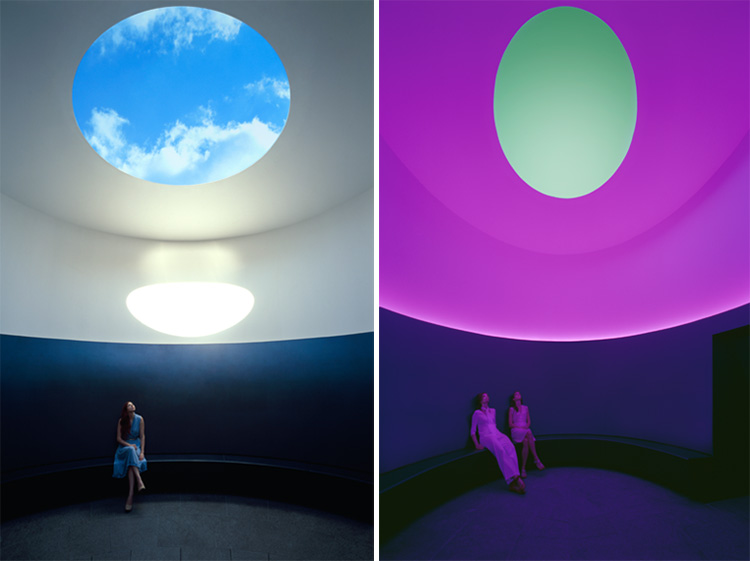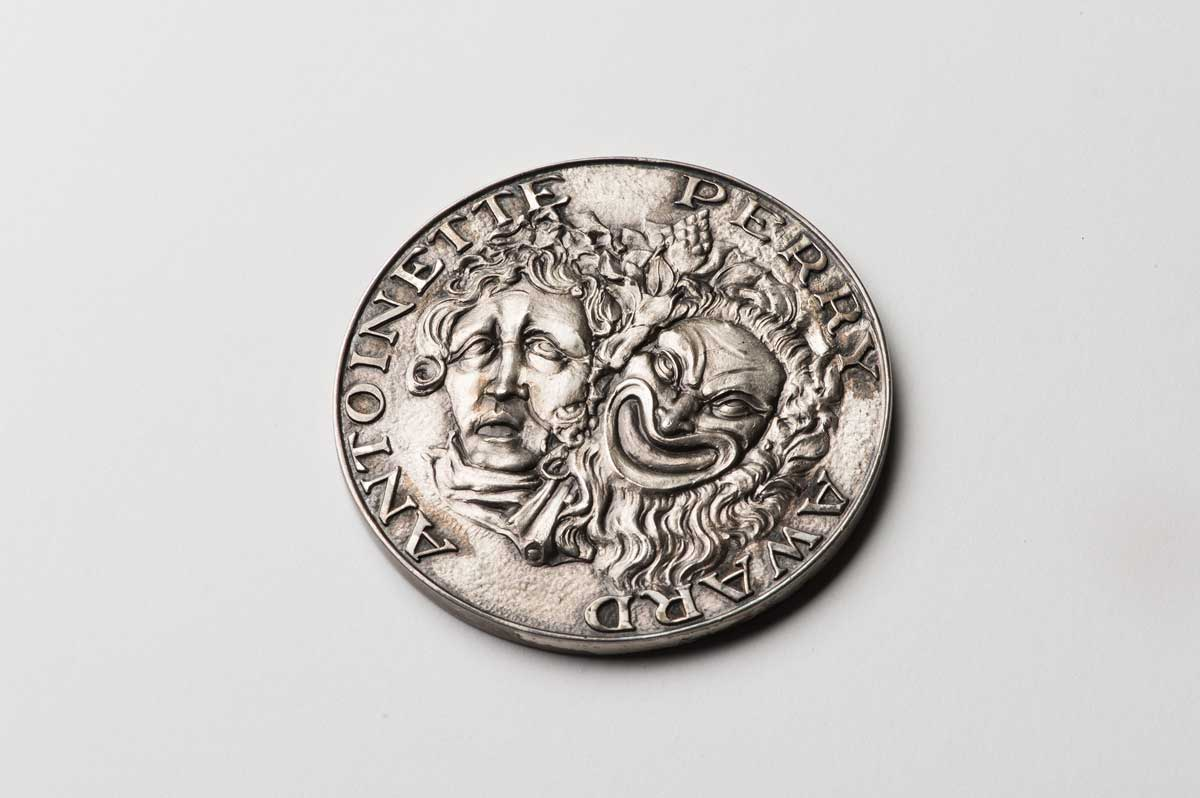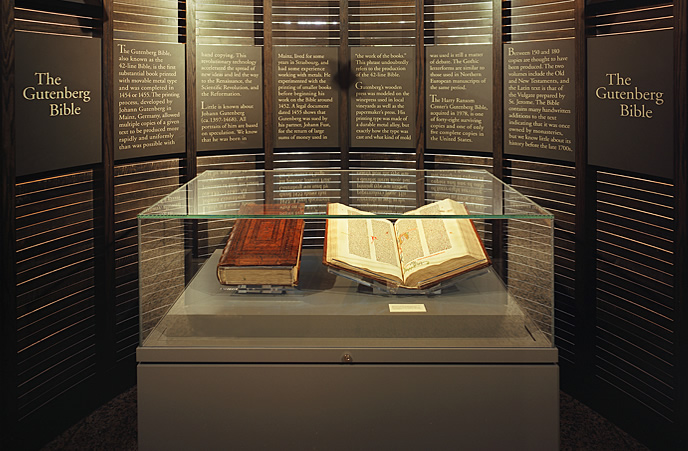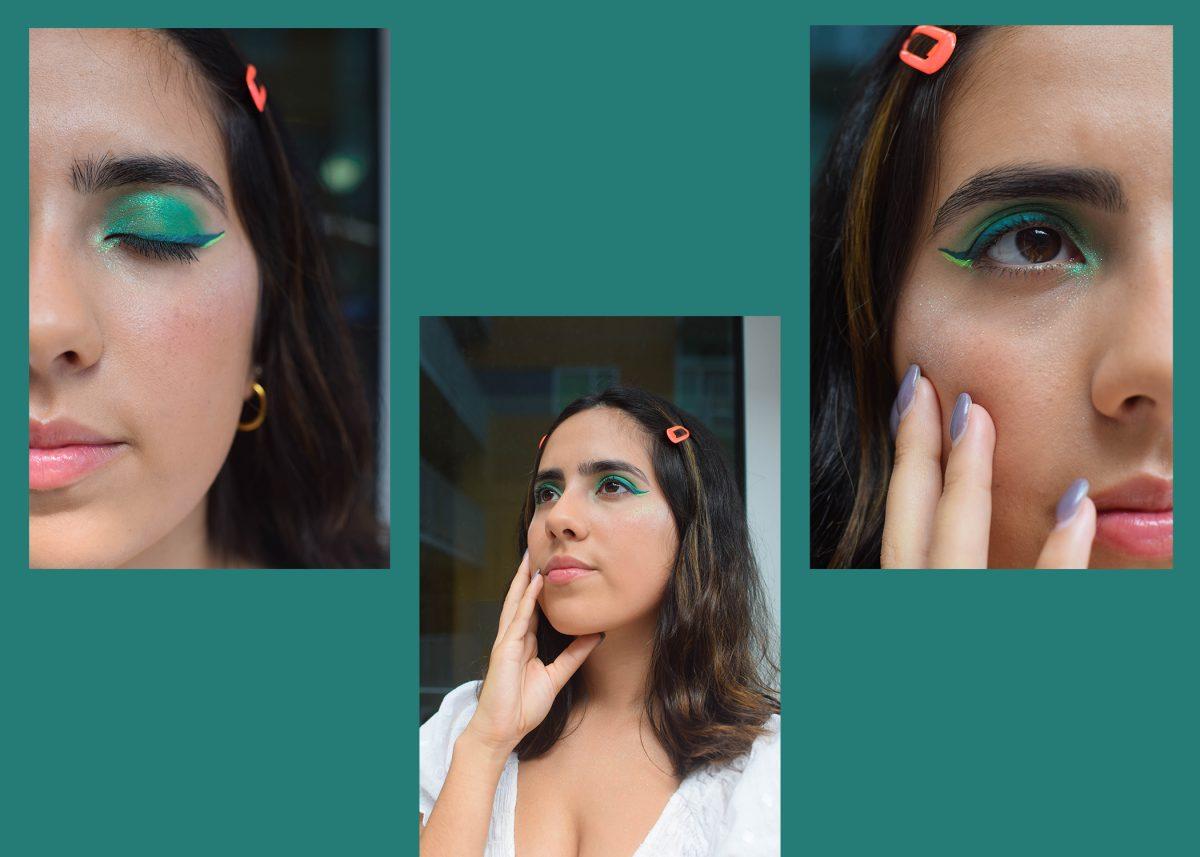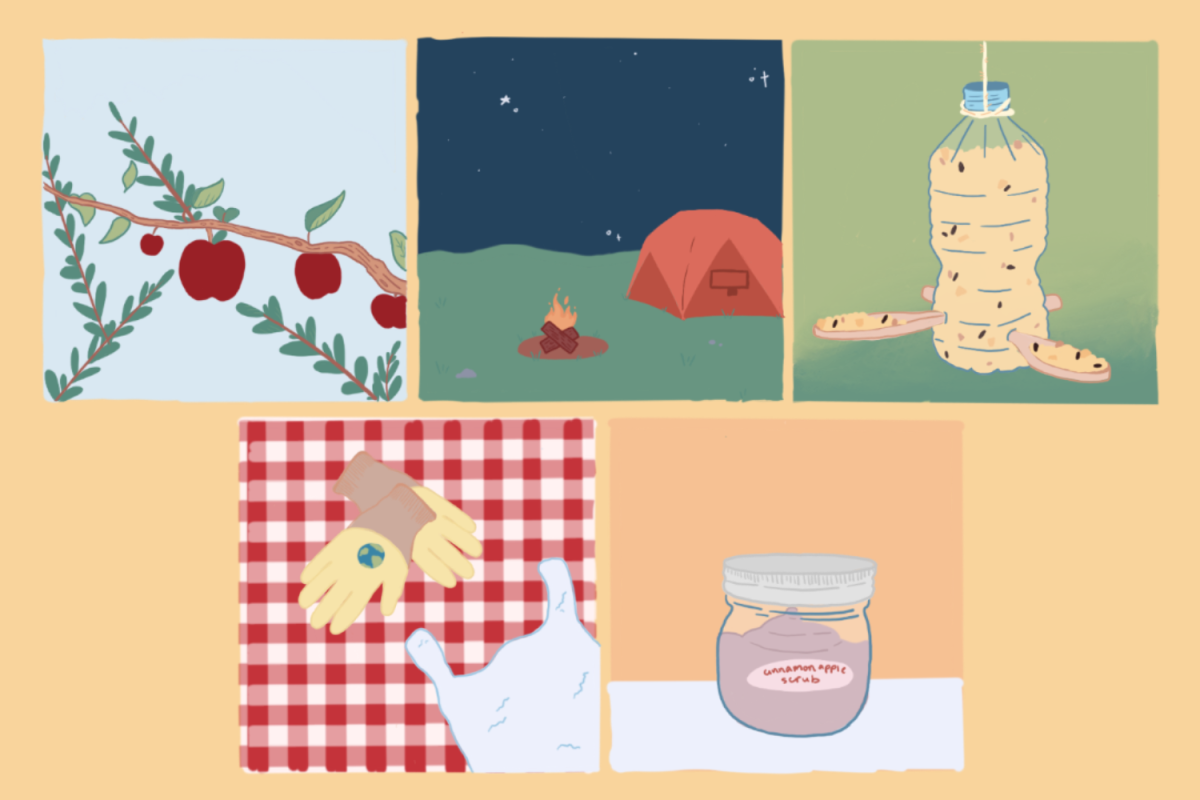Spending all day on campus can be a drag, but you don’t have to waste away in the depressing lighting of the PCL! Break up your routine and visit some of the University of Texas at Austin’s hidden treasures.
Story by Selome Hailu
GOLDSMITH COURTYARD
Goldsmith Hall is astonishingly beautiful—what else could you expect from a building in the School of Architecture? Every detail is crafted to a tee, including the area outdoors. The Goldsmith courtyard is the perfect nook to slow down and get relaxed in the midst of your stress. The turquoise iron gates open up into a quiet, contemplative space with a stone path down the center and around the perimeter. There’s a variety of plant life, including tall palm trees, monkey grass, and for two short weeks at the end of winter, hundreds of magnolia blossoms.
Photo courtesy of Jim Nicar.
The empty pool in the middle exposes walls of tiny green, yellow, and white tiles. Go to Goldsmith and read with your back to a tree trunk, sit on one of the wooden or stone benches, or nap in the grass. There’s nowhere more peaceful to celebrate the springtime! If you’re lucky, you might enter with the soundtrack of a student’s soft guitar playing by the gate.
Photo courtesy of José E. Arnó Ortega.
THE PLANT RESOURCES CENTER
UT is home to the largest herbarium in the southwest of the United States. Enter from the first floor of the Main Building, and you’ll find the Plant Resources Center, which has nine floors of collections throughout the tower. The PRC was established in 1890 and has been growing ever since. If you drop in during visiting hours and sign the guest book, you’re likely to run into George Yatskievych, the friendly head curator. Follow him through this unorthodox museum and you’ll find rare Brazilian plants preserved from Captain Cook’s first voyage around the world in the late 1700s, or Charles Darwin’s findings and handwritten labels from the Galapagos in 1835. Even massive palm trees are available for viewing, separated into small sections and pressed piece by piece.
Photo courtesy of the Plant Resources Center.
Only a fraction of the collections are accessible to the public, but with over 1 million specimens, that’s more than enough. The PRC is an amazing monument to natural history, but it’s not just a point of beauty for STEM majors. On Yatskievych’s guided tour, he shares stories of both a poet and a digital artist who visited over periods time to create pieces inspired by the colors, shapes, and textures of the pressed plants. Funding and research in scientific fields has begun to shift and museums that focus on organisms instead of ecosystems get less buzz than they used to. But, hiding in plain sight, right inside UT’s most iconic building, the Plant Resources Center is ORANGE Magazine’s new favorite secret.
THE COLOR INSIDE
The Color Inside is an art installation at the Student Activity Center. Landmarks, UT’s public art program, commissioned it from artist James Turrell in 2013. The piece is a large, round structure that you can enter from the third floor rooftop of the SAC. Visit during the day, and it seems simple enough: a round, empty room with seating around the perimeter and an oval-shaped cut out in the ceiling, notable only for the gentle echo of every small sound. But if you catch The Color Inside at sunrise or sunset, the exact same space looks totally different.
Photo courtesy of Florian Holzherr, The University of Texas at Austin.
Early risers can arrive before dawn to watch the installation transform with the sky. As the sun comes up, the space glows with a deep fuschia, then a warm amber, until it reaches a pale white which lingers through the daytime. Or, make a free reservation online and visit at sunset to watch the full light sequence, which goes through the entire color wheel. As the lights change color, viewers’ perception of the sky’s color changes as well. The Color Inside offers to change the way you see, so if staring at your books and screens has you down, try looking upwards instead.
THE HARRY RANSOM CENTER
The Harry Ransom Center is a nationally-renowned archive, museum and library, and it’s right here on campus! Named for former UT president and chancellor Harry Ransom, it is home to some of the most unique archives in the world. In the HRC, you’re likely to find the diaries and manuscripts of your favorite classic novelists, or art pieces you’ve seen on screens your whole life. Remnants of the greats such as Sylvia Plath and Salvador Dali sit throughout the building. Earlier this year, the HRC added its newest collection: the archive of revolutionary American playwright Arthur Miller. During his life Miller developed a relationship with the Ransom Center, which allowed UT to win the archive over Yale University, who also competed for it. It contains early drafts of his work, including “The Crucible,” “Death of a Salesman,” and “All My Sons,” all with handwritten edits. The archive also showcases his Tony Award for Best Play and his personal journals.
Photo Courtesy of UTNews
Among the permanent and public exhibitions are one of the world’s few remaining Gutenberg Bibles, and the first photograph taken on a camera known to man. If you’re looking for a little history and culture to get you inspired during midterm blues, the Harry Ransom Center has you covered.
Photo Courtesy of The University of Texas at Austin































